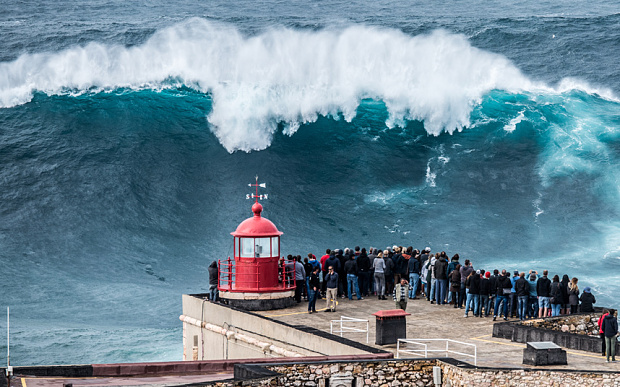
Silver Coast
The Oeste Region or Western Region of Portugal features beautiful landscapes and a gentle climate and blends the benefits of both the coast and the country into one amazing area. The long tradition of hospitality and the varieties of activities available make traveling to the Oeste Region the perfect location for short or long holidays.
This area is a unique region full of rich and exciting cultures that have centuries of maritime and fishing traditions, and a history full of vineyards and wine-growing. If you are interested in visiting this spectacular region, you must check out the top four preserved and protected areas: Natural Reserve of Berlenga, Serra de Montejunto Protected Landscape, Cliffs of the “Oeste”, and the Óbidos Lagoon.
Natural Reserve of Berlenga
This is a protected underwater maritime environment. The Reserve consists of the main island of Berlenga and the adjoining reefs. This area features fabulous beaches, the S. João Baptista Fortress and lighthouse. If you enjoy scuba diving, this will be your paradise. The clear waters of the Berlengas ensure good visibility of the marine fauna and flora, exotic fish, not to mention several sunken ships to explore, including the São Pedro de Alcântara.
The Berlengas Islands situated 10 km (6.2 miles) west of the fishing town of Peniche, the stunning and secluded Berlengas Islands are home to the Berlengas archipelago nature reserve. The Berlengas Islands form part of a dramatic natural landscape, and contain Portugal’s most scenic fort, while the crystal-clear waters are teeming with sea life. There’s
a lot to see and do around the Berlengas Islands, and the large variety of activities will appeal to a wide range of different visitors. It is possible to visit and explore the largest of the three islands, the Berlenga Grande, and this excursion is considered as one of the highlights of the Peniche region.
Historically, the Berlengas were an important location to defend. The islands could have provided a suitable staging area to attack the Portuguese coast, so in the 17th century the São João Baptista fort was built. This small fort is one of the most visually striking buildings in Portugal, rising up from the turquoise sea waters and tied together by narrow arched bridges.
Last but not least, and standing at the highest point of the island is the Farol Duque de Bragança, or the Duke of Braganza lighthouse. The light emitted from the 120m-high vantage point can be seen from more than 50 km (30 miles) away, an impressive feat considering that the structure only uses solar power and batteries. The lighthouse dates back to the 19th century, and the building is not open to the public.
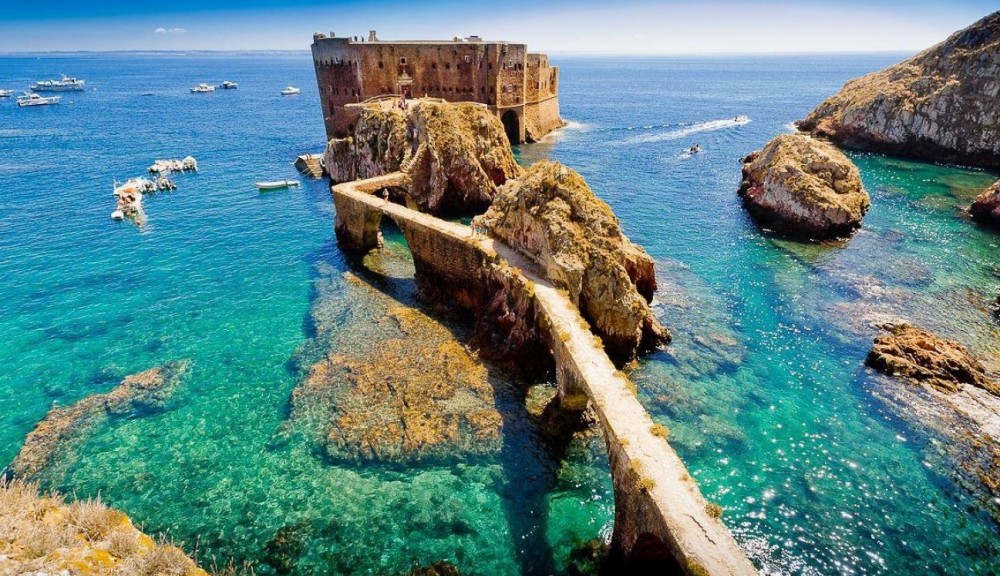
Cliffs of the Oeste
The Cliffs feature beautiful high river banks between the beaches of Santa Cruz and of São Bernardino. This area not only boasts beautiful vistas but rich history running back millions and millions of years. The Cliffs of the Oeste have originated from the separation of Pangaea giving origin to the continents and landmasses of today. Because of this, the area contains a valuable depository of paleontological finds and becomes a great destination for history buffs or individuals interested in observing history in present time.
Óbidos Lagoon
The Lagoa de Óbidos (Óbidos Lagoon) is arguably one of the most beautiful locales of the Oeste Region in Portugal. It features a fragile ecosystem of diverse species living in a rich habitat. While here, observe each of the many species of migratory water birds or shellfish, or partake in a number of exciting water sports available in the lagoon.
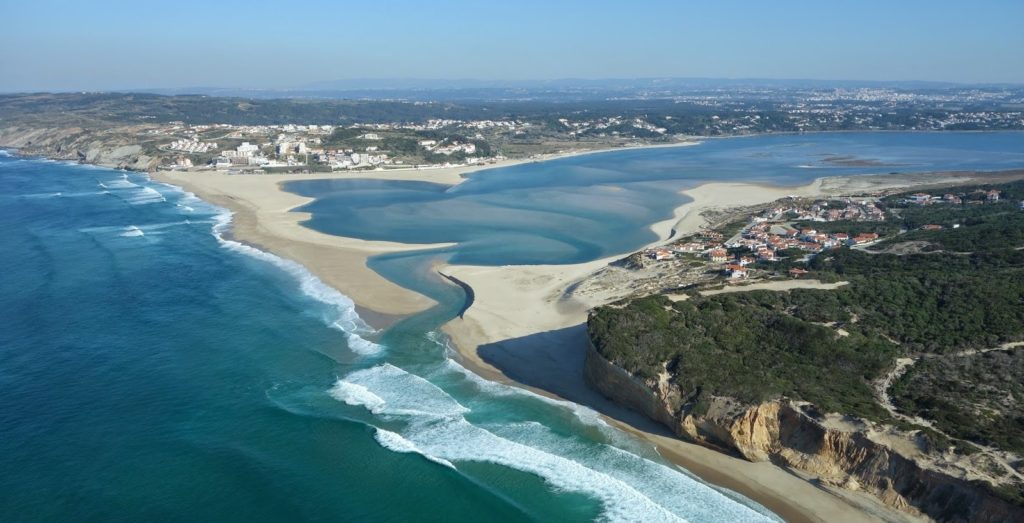
Serra de Montejunto Protected Landscape
The Serra de Montejunto or Hill of Montejunto features the highest point in the Oeste Region. Its geological structure is that of a large hill containing dozens of coves and gullies spotting the beautiful landscape. The Serra de Montejunto Protected Landscape features a plethora of beautiful flora and fauna that are here due to the transition between the sea and land creating a microclimate ecosystem. For birdwatchers and nature lovers, the Serra de Montejunto Protected Landscape makes the perfect retreat to enjoy their beloved activities.
Óbidos
Is considered as one of the most charming and picturesque towns of central Portugal, with traditional painted houses and narrow cobbled streets. Óbidos has an extensive history, an imposing castle and wonderfully preserved town walls.
The castle of Óbidos has been converted into a luxurious hotel and it is a truly unique location for a night’s stay. The castle dates from the 12th century but the structures that tourist clamber over today date from the 14th century when the castle’s keep and town walls were strengthened.
Ginja de Óbidos is a cherry liquor that is produced within the Óbidos region and no visit to the town is completed without sampling the sweet alcohol drink. The drink can be served in small chocolate cups which can be eaten after drinking the Ginja.
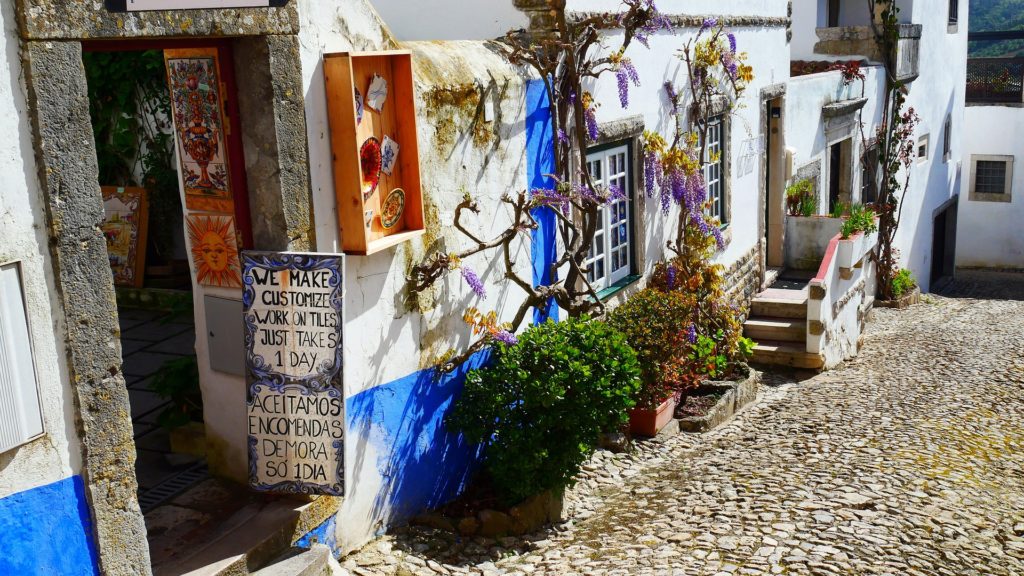
Cabo Carvoeiro
Marks the tip of Peniche’s rugged peninsula and is a much-loved symbol of the portside city. Translating to “cape of coal,” it’s fascinating geology is both a marvel and a menace. Cabo Carvoeiro’s weathered cliff faces present a remarkable sedimentary record, but the craggy rocks have caused many shipwrecks and collisions over the centuries. Admire the heritage lighthouse that looks out across the surging ocean from the cliff top or learn about the cape’s vivid natural history.
Make your way out to the western most edge of Peniche’s peninsula. Note the magnificent lighthouse, Farol do Cabo Carvoeiro. Initially built in 1758 and rebuilt in 1886, the lighthouse was constructed to save seafarers from the rugged rocks that speckle Peniche’s coastline. The quadrangular tower is situated 187 feet (57 meters) above sea level and soars 89 feet (27 meters) above the ground.
Stroll out to the edge of the cliffs and find what we call Miradouro, or scenic lookout. The concrete platform perched high above the surging swell provides a breath-taking vantage point across the coast. Look north to see the remarkable Nau dos Corvos (Carrack of Crows), a soaring sea stack that stands a short distance offshore. The Berlengas Islands can be seen in the background. This area is part of a nature reserve that is protected for its diverse marine life. If you have an interest in geology, be sure to check out the rocks that flank the cape. The rocky outcrop shows a distinctive timeline within its limestone and sedimentary strata, which dates back to the Early Jurassic period.
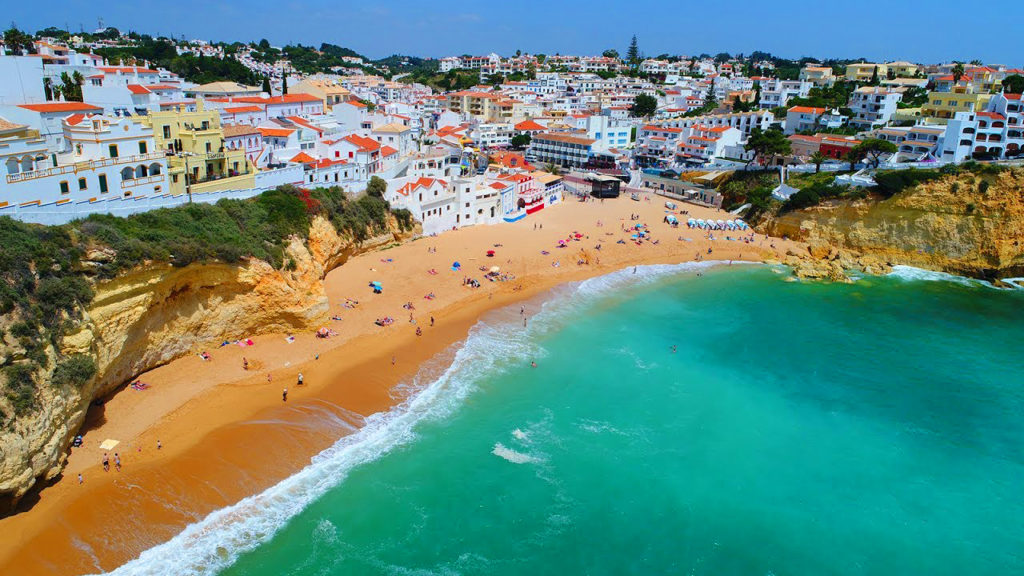
There are a few other recommendations:
Porto das Barcas & Peralta | Lourinhã | Sintra | Lisboa | Mafra | Cascais
Additional information please reach out to us.


